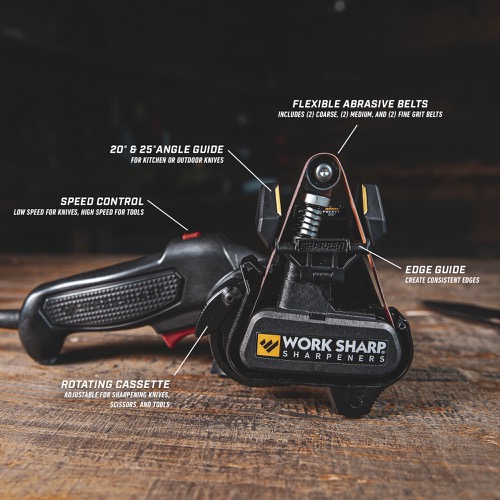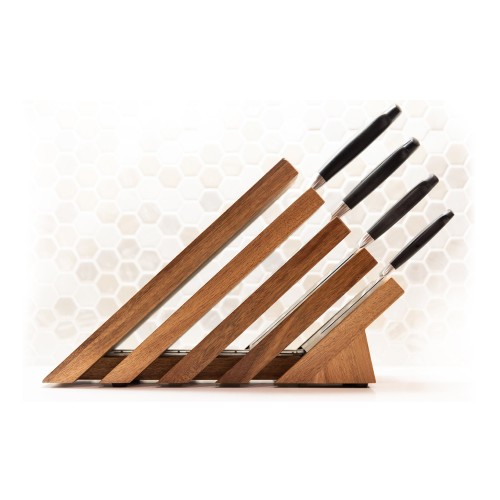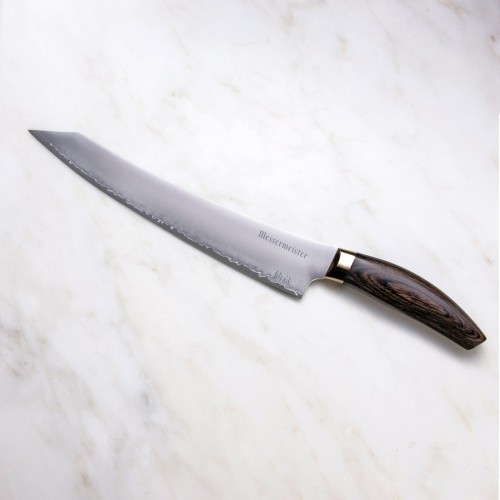Marc Wade, Messermeister

Cool Tools Show 286: Marc Wade
Our guest this week is Marc Wade. He’s the Director of Business Development for Messermeister, the leading manufacturer of premium handcrafted chef’s knives and culinary tools, is an award-winning kitchen knife designer and developer, best known for his leading role in the development of the Shun brand. A second-generation knife maker, Marc began making knives at the age of 10. His innovative design approach has been highly influential in transforming the kitchen knife industry over his 20+ year professional career. He is credited on multiple international patents relating to knives and knife accessories and is a key figure within the housewares Industry. With a long list of creative accomplishments, Marc has also worked on cutlery projects with major brands including: All-Clad, Wiliams-Sonoma and Milk Street. He has collaborated with well-known personalities within the international food community such as Alton Brown, Michel Bras, Tom Colicchio and Thomas Malzer, to name a few. You can find Messermeister on Facebook and Instagram @messermeister.
Subscribe to the Cool Tools Show on iTunes | RSS | Transcript | See all the Cool Tools Show posts on a single page
Show notes:

WorkSharp MK.2 Sharpener ($100)
As a knifemaker, some of the most common questions I get are about sharpening. Because no matter how good your knife is when you start, eventually if you use it enough it’s going to need to be restored. A few years back I got to know a US company down in Southern Oregon that has a history of making all their cool things that we use to sharpen knives in a production setting, in a knife factory, and they’ve since grown into making knife sharpeners for the home, and they’re amazing. It’s little, itty-bitty versions of what we would see on a production factory floor, and they do it very differently, worrying about function first, not necessarily the way convention says something is supposed to look or work. When you’re talking about putting an edge on steel you’re really talking about abrasives and consistency. So the idea is to lock down a lot of variables, and that’s what WorkSharp does really well. They use what’s called a slack belt sharpening concept, which is like a belt sander with a loose abrasive belt that spins. And the nice part about that is that you can worry about holding the right angle and kind of moving the knife appropriately and not really have to worry about creating a friction between your abrasive and your edge. So it really simplifies the process. They have a Delta mounted belt. In other words, three pulleys, and they have this loosely mounted abrasive belt on there. And it runs on a little motor, probably the same motor that you would use in a power drill. Then everything else is really about giving you fixtures and platforms to rest the knife and control the coarseness of the abrasive. And so the best part about these machines is the back of the package, and what I mean by that is that they add a chart that kind of slips out, just this cardboard thing, and you can mount it on the wall and if you’re trying to restore a fine edge on a hard piece of steel, then it gives you the settings.

Chef’n Avoquado ($10)
With specialty cutting tools, design matters and it’s not alway about having the sharpest tool in the shed. My favorite example of this is a funny little tool from Chef’n, the Avaquado. I love it as an example of really elegant design. Although it’s a cutting tool, it’s not very hard to cut an avocado, right? So sharpness isn’t a premium. What it is, is the design that you need to have to be able to do all those tasks from removing the fruit to getting that stubborn pit out of there and all that. And while there are knife techniques for all of that, it’s a little bit of daunting task when you have just this razor sharp knife, and you’re holding an avocado generally in your hand, without a whole lot of protection as you go at it. The way it works is quite simply it’s got a very dull blade —I like to say it’s taking dull to a higher level — that can pierce the skin and kind of do that initial half cut that everybody needs to make. Then they uniquely put this little set of teeth in the center of it so you can quickly grab the stone or the pit out of there, and then with a flick of a wrist, a little cutting loop scrapes out the fruit, and it’s absolutely amazing. Avocados and specifically guacamole is kind of a side hobby for me, and this tool just really makes it a load of fun, so I thought I’d call it out.

Next Level Magnetic Knife Block ($100)
One of our own products is taking a fresh clean look at knife storage. It’s kind of looking at knife storage in a really unique way. Things that aren’t artful and elegant, you take them all off the counter, and what you want are really show-piece things. And we make show-piece knives, and we want people to have the right frame around it. It’s like the Mona Lisa. It’s a nice painting, but it has that real fancy frame so you know it’s important, even guys like me can recognize that. So I wanted to do that for our knives. And what we’ve got is essentially a wedge of layered magnetic platforms where each knife can sort of rest anywhere you want it to in any configuration, up or down on the block or left side, right side. Whether it’s full or just got a few knives in it, it doesn’t look awkward like something is missing. It’s these ventilated platforms. And the real challenge with it is, when we look at sort of the functionality of it, the temptation is to put this incredibly strong magnet in place so you wrestle the knife off and then it kind of grabs it when it goes, but what I tried to do in this case was to, again, go sort of the other direction. Using a lower strength magnet, a rubber pad or a series of them, where the knife rests nice and softly without the block pulling it out of your hand. That’s really good for the knives, doesn’t get them clanging around. It doesn’t scratch them. And then when you go to retrieve the knife out of the block, it kind of releases and lets go nicely as well.

Kawashima Powdered Steel Knives (price varies)
Somebody asked me what knives have I bought recently, and quite honestly I said, “Oh, geez, that’s a terrible question to ask a knife maker because we don’t buy knives.” We make them, right? And of late, I have been all about modern materials and lines, and our Kawashima knives are kind of the hottest thing going right now. And I know this because I put one in my wife’s hands and she’s always this guinea pig. I’ll leave it on the counter. She picks it up and she uses it and I find that she keeps going back to it, and I know it’s going to be commercially successful. We partnered with Shoichi Kawashima. He’s a sixth generation Japanese knife maker. He’s always trying to find a new and better way. And so we worked on the lines a little bit to create a high-handled knife that put your hands in a very comfortable position, had a long, deep rocker to the blade, and gave you a big tool that was incredibly light and almost disappeared in your hands. So you look at something, you cut it. And we love the form of that. And it’s not conventional by any stretch, but what you find is it just naturally encourages you to be in the right spot on the knife for the kick-off point. And powdered steel is a little bit different. For 100 years, hundreds of years, we’ve used wrought steel. You hear wrought like wrought iron, and it’s what you’d expect. It’s a bunch of elements thrown into an alloy. It’s heated up into some molten soup, and then it hardens, and generally there’s just some dude there smacking it with a hammer for some unknown reason, right? To shape the thing. And that’s sort of the basis of the way steel and specifically blade steel has been for a long, long time. We actually have newer technologies these days. There are various techniques, but generally what you’re doing is the entire cutting surface. The goal is to have a much more pure and dense steel. The process is called the HIT process, or hot isostatic pressing.









